20 Amazing Customer Satisfaction Survey Questions+[5 Examples]
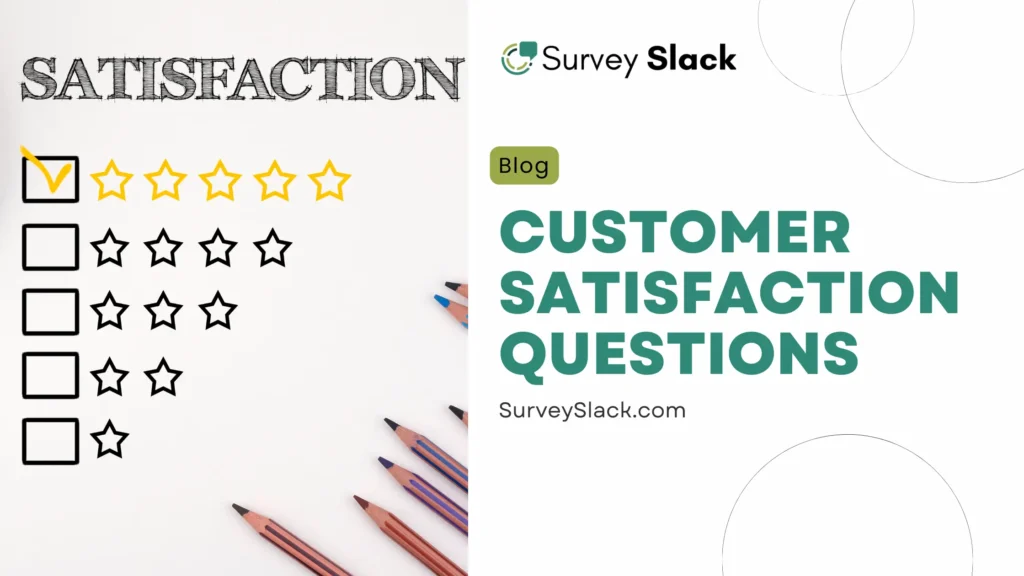
In this article, we will explore everything about the Customer Satisfaction Survey. Companies need to be clearer on how they see themselves and how customers see them. Many businesses make assumptions about their products and services, often overestimating customer satisfaction. After all, your product exists to serve your customers to give them a positive experience.
In this post, we will cover:
- The Importance of Customer Satisfaction Survey
- Best practices to create a customer satisfaction survey
- Customer Satisfaction Survey Questions
- Customer Satisfaction Survey Examples
A Bain & Company report highlights that 80% of companies believed they delivered a superior customer experience, and only 8% of their customers agreed!
Additionally, the report found that despite 95% of high-level managers claiming a customer focus, only 30% had systems in place to gather regular customer feedback.
So, how do you truly understand how your customers feel? How can businesses know what features to prioritize if you’re not sure what they need? Customer satisfaction surveys bridge this gap. They give insights into your customers’ experiences and satisfaction.
Boost Response Rates Now
Increase Response Rates & Engagement with AI Survey Questions Generator
Importance of Customer Satisfaction Survey
While understanding customer sentiment is crucial for growth, customer satisfaction surveys offer even more benefits for businesses focused on the customer experience. These surveys go beyond simply listening to the “voice of the customer” and provide actionable insights that can be leveraged to drive sustainable success
Here’s why customer satisfaction surveys are so important:
- Gain Valuable Customer Insights: Surveys provide a direct line to your customer’s thoughts and feelings. Businesses can discover their preferences and opinions on your products or services. It can identify pain points and find unmet needs.
- Measure Customer Satisfaction: Companies can use surveys to track customer sentiment over time. You can also compare your performance to competitors using the data. This data can be used to set goals and measure progress toward achieving them.
- Improve Customer Experience: By understanding customers’ needs and expectations, businesses can make easily targeted improvements to their products, services, and processes. This will lead to a more positive customer experience and increased satisfaction.
- Boost Customer Loyalty: Happy customers are more likely to become loyal customers. Surveys show that if you value their feedback. It fosters trust and builds stronger relationships. Loyal customers are repeated customers and can become brand advocates.
- Make Data-Driven Decisions: Surveys provide valuable data that can be used to inform strategic business decisions. companies can use survey results to prioritize product development. It is also useful for optimizing marketing campaigns and improving customer service.
Also, Read:
Best Practices to Create a Customer Satisfaction Survey
Surveys are an effective thing for businesses. It enables valuable insights to understand customer needs, wants, and areas to improve.
Here’s a step-by-step process to help you create effective customer satisfaction surveys:
1. Define Your Goals:
What information would you like to gather through the survey?
- Is it overall satisfaction, specific product feedback, or gauging customer service interactions?
- Having clear goals will guide your question selection and survey design.
2. Choose the Right Delivery Method:
- When choosing a survey method, consider your audience’s preferences. Options include email, website pop-ups after purchase, in-app surveys, and even SMS.
3. Keep it Short & Sweet:
- People are busy! Aim for 5-10 minutes max to maintain engagement and completion rates.
4. Mix Up Question Types:
- Multiple Choice: Easy to answer and provide data for analysis.
- Rating Scales: Gauge satisfaction levels on a scale (e.g., 1-5 stars).
- Open-Ended Questions: Allow for in-depth feedback and valuable qualitative data.
5. Craft Clear & Concise Questions:
- Avoid ambiguity and double-barreled questions (asking two things at once).
- Use language that your target audience understands.
6. Leverage a Logical Flow:
- Start with general satisfaction questions and progress to more specific ones.
- Consider skipping logic to avoid irrelevant questions based on previous answers.
7. Test Your Survey:
- Before mass distribution, get feedback from colleagues or a small test group.
- This helps identify any confusing questions or improve the overall flow.
8. Thank Your Participants:
- Show them appreciation for their time and feedback.
9. Analyze & Take Action:
- Compile and analyze data to find trends and areas for improvement.
- Develop an action plan to address customer concerns and implement changes.
Also, Read:
Customer Satisfaction Survey Questions
Understanding your customers is key to success. This curated list has 20 customer satisfaction survey questions. They give valuable insights into customer experiences, expectations, and satisfaction levels.
NPS Survey Questions:
- How likely are you to recommend our product/service to a friend or colleague on a scale of 0-10??
- What is the primary reason for your score?
- How can we improve to earn a higher rating from you?
- What feature or aspect of our product/service do you value the most?
- Is there anything specific we can do to turn your experience into a perfect 10?
CES (Customer Effort Score) Survey Questions:
- How easy was it to accomplish your goal with our product/service today?
- Did you encounter any difficulties while using our product/service? If yes, please specify.
- How likely are you to continue using our product/service based on your experience today?
- “Did you find the information you were looking for easily?
- Did our product/service meet your expectations in terms of ease of use?
Open-Ended Feedback:
- Please share any other comments or suggestions you have. They should be about your experience with our product or service.
- Is there a particular aspect of our product/service that exceeded your expectations? If so, please describe.
- Are there any areas where you feel our product/service could be improved? Please provide details.
- Do you have any suggestions for new features or enhancements that you would like to see?
- How would you describe your experience with our product or service? In your own words, please.
CSAT (Customer Satisfaction) Survey Questions:
- How satisfied are you with your experience with our product/service today?
- What aspects of our product/service contributed most to your satisfaction?
- Were there any areas where our product/service did not meet your expectations? If yes, please specify.
- How likely are you to purchase from us again in the future based on your current experience?
- On a scale of 1-5, how would you rate the overall quality of our product/service?
To get valuable feedback from customers, you must ask the right questions and communication is hard. It’s unfair to expect customers to offer criticism without prompting. When a survey is crafted it must be stimulating. They must encourage participants to share their insights.
Also, Read:
Customer Satisfaction Survey Brand Examples
We’ve discussed the importance of customer feedback and the questions to ask. You might wonder how to craft your survey. Look at the following customer feedback example questions used by real companies. They’ll inspire you to develop your survey and gather valuable insights.
1. Netflix
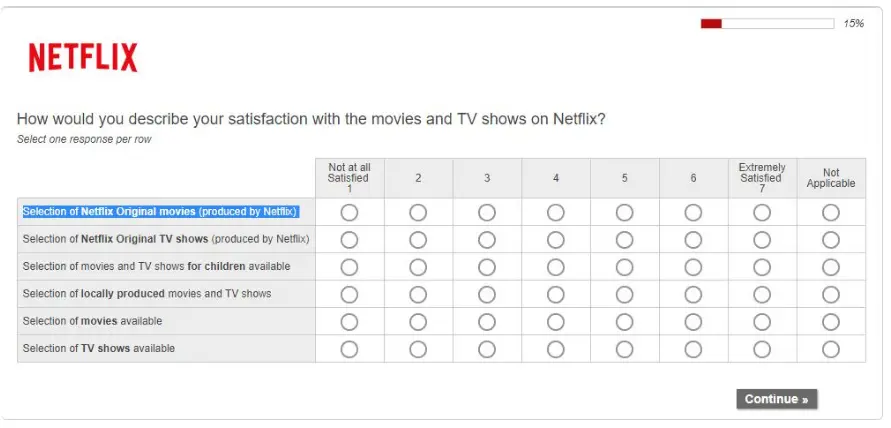
- Netflix goes above and beyond to deliver a personalized experience. Their recommendation system, fueled by a deep understanding of customer preferences, suggests movies and shows you’ll love. By analyzing watch history, ratings, and feedback, Netflix curates selections tailored just for you. This commitment to customer satisfaction ensures you’ll always find something engaging to watch.
What do we enjoy:
- Netflix survey highlights the importance of continuous customer feedback, even for dominant players. By gathering user insights and preferences, Netflix demonstrates that understanding its audience down to the details is key to lasting success.
2. Amazon
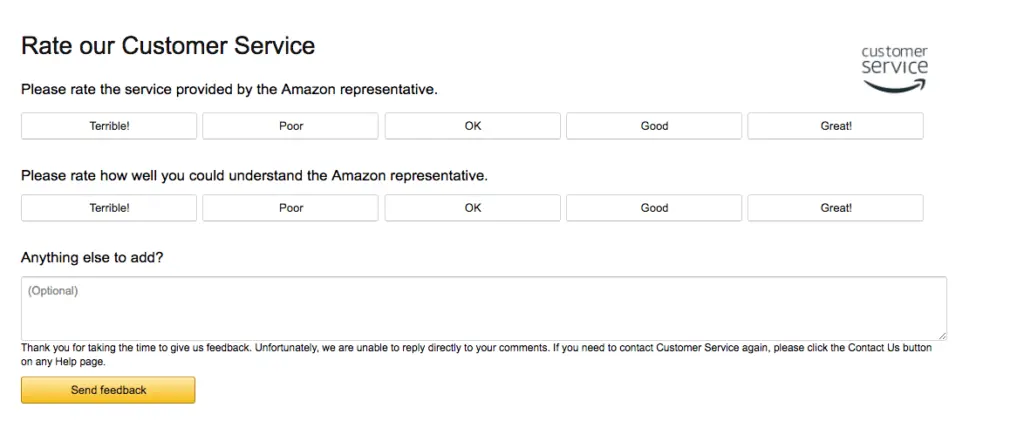
- Amazon is a global e-commerce giant, it goes beyond just offering a vast selection of products. They prioritize understanding their customers’ experiences. After contacting customer service, you’ll receive a brief survey gauging your satisfaction with the representative’s helpfulness and clarity.
- This feedback loop allows Amazon to continuously improve its support. Additionally, they offer a comprehensive knowledge base, empowering you to find answers and troubleshoot issues independently.
- This self-service approach minimizes the risk of incorrect purchases, ultimately leading to more informed buying decisions.
What do we enjoy:
- Amazon uses surveys after customer service interactions to measure satisfaction, consider sending similar surveys following interactions with the service team. Customers often reach out only when they face issues, so this feedback loop helps ensure their concerns are addressed and they leave happy.
3. Zomato
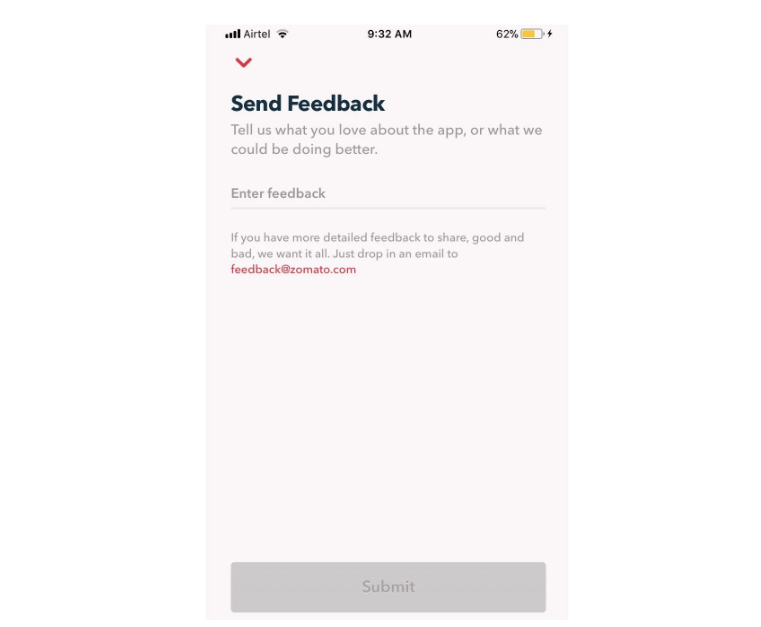
- Zomato’s rise to become a leading global platform for food delivery and reviews can be credited, in part, to its focus on user satisfaction. Catering to two distinct audiences – restaurants and hungry diners – Zomato cleverly addresses the needs and expectations. This two-sided approach is evident in its review system, where restaurants are rated on food quality, while diners can leave feedback on their overall experience. The survey clarifies this focus on simplicity, using a single, clear prompt to gather valuable feedback.
What do we enjoy:
- It is easy to analyze. Open-ended questions can be categorized into themes which can help identify common pain points and areas of satisfaction. It can provide rich feedback. Open-ended questions allow customers to elaborate on their experiences, providing valuable insights that multiple-choice questions cannot capture. It shows that the company cares. By asking for feedback, the company is showing that they are interested in improving the customer experience.
4. Uber
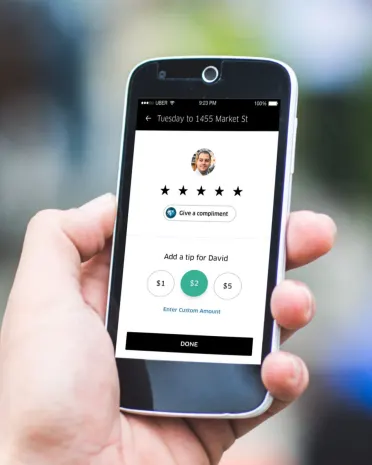
- Uber’s success hinges on understanding the needs of both riders and drivers. Their feedback system is key: passengers can rate their drivers based on factors like courtesy and cleanliness, while drivers can provide feedback on passenger behavior. This two-sided approach allows Uber to continuously improve the user experience.
What do we enjoy:
- Uber uses surveys to promote fairness and transparency for both drivers and passengers. Ratings from these surveys impact the reputation of both parties. Passengers with consistently low ratings may be declined rides by drivers. If your business caters to two distinct customer groups, consider creating separate surveys tailored to each audience’s experiences.
5. McDonald’s
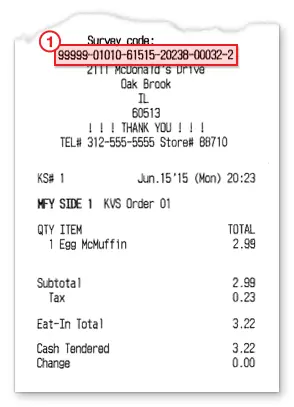
- Mcdonald’s isn’t just a global fast food giant, it’s a master of adaptation. They cater to local preferences with strategies unique to each country. To measure their success, they use incentivized feedback programs to gain valuable customer insights.
What do we enjoy:
- A standout feature in this McDonald’s survey was the inclusion of a labeled receipt on the right-hand side. This ingenious element directly highlights the corresponding question, eliminating any confusion for participants. This not only ensures McDonald’s gathers accurate data but also streamlines the survey experience by minimizing friction for customers.



